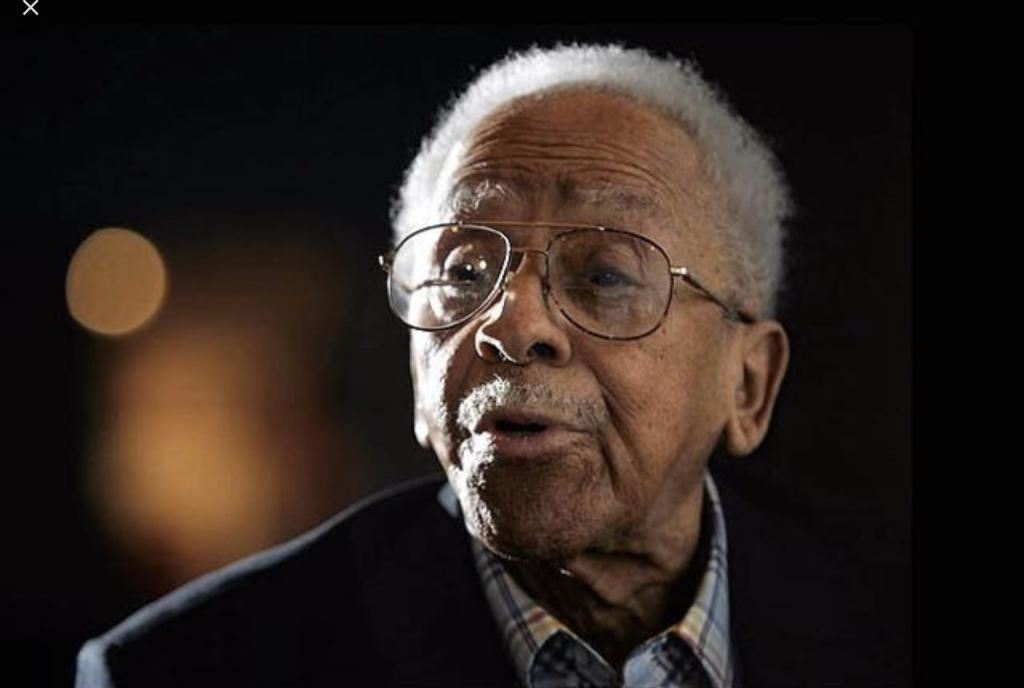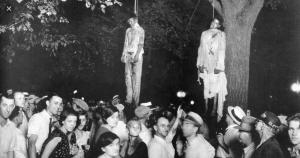
James Cameron lived a long and distinguished life. That was very nearly not the case.
Cameron left behind a wonderful legacy of civil rights activism when he died in 2006, at the ripe old age of 92. His list of accomplishments is impressive. Cameron made his living as a boiler engineer, a trade he learned at Wayne State University and plied until he retired at 65–but he made his mark with his work for civil rights. Life experiences as a young black man who grew up in an era of Jim Crow and the KKK led Cameron to use his spare time to make a difference. After living in Wisconsin and Alabama as a youngster, Cameron settled for much of his life in Indiana. In the 1940s, he was responsible for starting three local chapters of the NAACP in the state of Indiana, perhaps most notably, the Madison County chapter in Anderson, of which he was the first president.
Throughout most of the decade of the 1940s, Cameron also served as Indiana’s State Director of Civil Liberties. As a part of that position, he reported violations of civil rights laws to the governor of Indiana. This responsibility resulted in Cameron receiving many death threats. Facing increasing hostility for his work in Indiana, Cameron, fearing for his family’s safety, decided to move, eventually settling in Milwaukee. There, he continued to work tirelessly for civil rights and was an active participant in the March on Washington with Dr. Martin Luther King Jr. in 1963.
Cameron also found a platform as a writer, publishing many articles on racial injustice and his personal memoirs, A Time of Terror: A Survivors Story.
Late in his life, Cameron was inspired to leave one more lasting civil rights legacy when he founded America’s Black Holocaust Museum in Milwaukee in 1988.
By any measure, James Cameron’s was a life well-lived and he left a legacy of which anyone would be proud–but it almost never happened.
As a 16-year-old, James Cameron was caught in the wrong place at the wrong time. The place was Marion, Indiana and the time was August 7, 1930.
That was the night of the last public lynching in the state of Indiana–an event famously and gruesomely captured by this iconic photo.

The two young victims hanging from the tree on the Grant County courthouse square are Thomas Shipp and Abram Smith. They had been arrested for armed robbery and murder of a white man named Claude Deeter. James Cameron had been with Shipp and Smith earlier that night and he was also arrested. When word spread around Marion, Indiana of the murder and arrest, an angry mob broke into the jail and took Shipp, Smith, and Cameron out of their cells and beat them. They were dragged outside where a crowd of more than 10,000 had gathered. Shipp and Smith were hanged from a tree as the angry white throng looked on in wild-eyed approval. Cameron had a noose placed around his neck, but his hanging was interrupted by a couple of folks who convinced the mob that he was not guilty. Unlike Shipp and Smith, James Cameron, although badly beaten and battered, was allowed to live and was returned to the jail.
Eventually, Cameron was convicted as an accessory before the fact to the murder. He served a four year jail sentence. When he was paroled he went to Michigan where he began his education at Wayne State. The rest of his life was spent defending the rights of the oppressed. In 1991, he received a full pardon of his conviction from the state of Indiana.
A life so rich with service to humanity was nearly snuffed out senselessly before it ever bore fruit. One shivers to imagine the myriad such lives that never got the chance because of bigotry, racism, and hatred.












